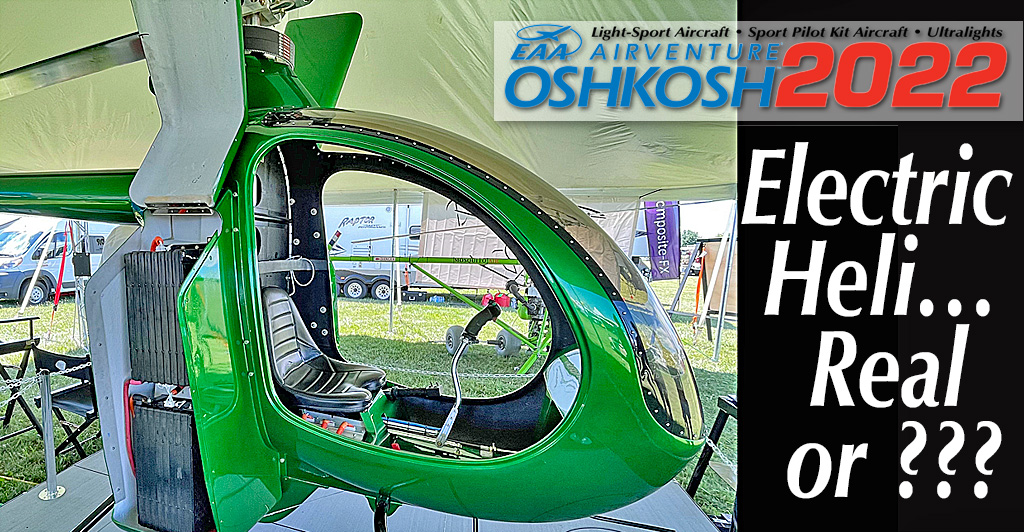
A year ago at Oshkosh, I became intrigued by the way Composite FX had developed the older Mosquito into their XE line; multiple models running from a legitimate Part 103 helicopter, their XEL model, to the turbine XET model. The company builds these handsome aircraft in Trenton, Florida after acquiring the design from Canadian John Uptigrove (see image of his original). Vertical takeoff has a special appeal, even to those of us with little or no rotary experience. Setting aside the skills to fly such machines, the cost of a helicopter is usually so high that many don’t even consider it. Maybe they didn’t look far enough. Composite FX and their $60,000 ready-to-fly XEL model (kit for $47,000) completely changes that thought experiment. Not only does this handsome aircraft perform impressively in experienced hands but many can afford it. Yet this article is not about the product line the manufacturer is presently delivering.


 Vertical takeoff has a special appeal, even to those of us with little or no rotary experience. Setting aside the skills to fly such machines, the cost of a helicopter is usually so high that many don't even consider it. Maybe they didn't look far enough.
Vertical takeoff has a special appeal, even to those of us with little or no rotary experience. Setting aside the skills to fly such machines, the cost of a helicopter is usually so high that many don't even consider it. Maybe they didn't look far enough.
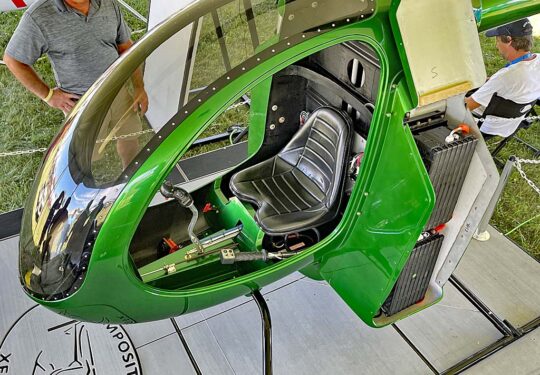 Composite FX and their $60,000 ready-to-fly XEL model (kit for $47,000) completely changes that thought experiment. Not only does this handsome aircraft perform impressively in experienced hands but many can afford it.
Yet this article is not about the product line the manufacturer is presently delivering. It's about a new project a Composite FX electrical engineer put together as a proof-of-concept, using the XE line as his platform. What you see nearby is the first iteration of his work and it has already flown successfully. Curious about run time? So is everyone; I heard the question asked repeatedly. But first…
Composite FX and their $60,000 ready-to-fly XEL model (kit for $47,000) completely changes that thought experiment. Not only does this handsome aircraft perform impressively in experienced hands but many can afford it.
Yet this article is not about the product line the manufacturer is presently delivering. It's about a new project a Composite FX electrical engineer put together as a proof-of-concept, using the XE line as his platform. What you see nearby is the first iteration of his work and it has already flown successfully. Curious about run time? So is everyone; I heard the question asked repeatedly. But first…
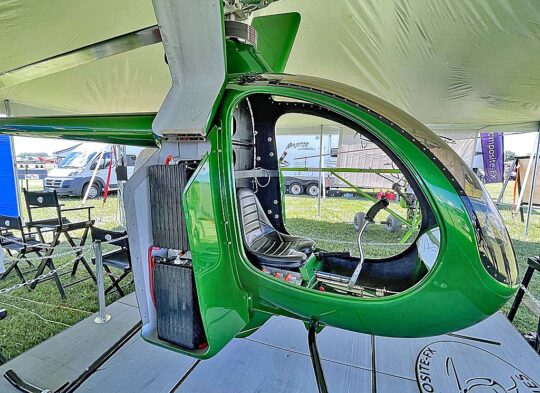 The mainstream media seems mesmerized with electric vertical takeoff and landing vehicles (eVTOLs) and the promise of "air taxis." Development projects have attracted hundreds of millions of investment dollars …more than the entire LSA industry has spent to develop 157 models over 18 years.
I have no doubt this new direction in airborne technology could lead in fascinating directions, some of which will surely benefit all pilots. However, in any definition of "near-term," I simply cannot see corporate executives flying from one building in San Francisco to another.
The mainstream media seems mesmerized with electric vertical takeoff and landing vehicles (eVTOLs) and the promise of "air taxis." Development projects have attracted hundreds of millions of investment dollars …more than the entire LSA industry has spent to develop 157 models over 18 years.
I have no doubt this new direction in airborne technology could lead in fascinating directions, some of which will surely benefit all pilots. However, in any definition of "near-term," I simply cannot see corporate executives flying from one building in San Francisco to another.
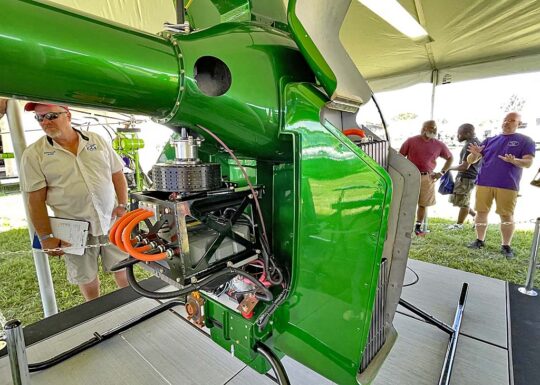 This is not to doubt the technology these engineers are creating — from multicopters, to tilt wings, to ducted fans, to hybrid versions of all these. The truly intractable problems may be general public acceptance and regulatory accommodation.
Even if we assume that batteries will make some great leap forward in energy density, convincing a doubtful public that strange contraptions flying over their heads are not a danger will be hard. They will resist the noise a vertical takeoff aircraft makes. Electric motors may be much quieter than an internal combustion engine but the air movement to lift a 4-6 passenger vehicle vertically is going to generate a mighty racket. On a building rooftop in a downtown location, perhaps this is no problem. In your quiet home neighborhood, big problem, at least after the novelty of seeing your first Uber air taxi wears off. Not In My Back Yard (NIMBY) is a ready-made movement to resist this. Let's get more practical …and near-term.
This is not to doubt the technology these engineers are creating — from multicopters, to tilt wings, to ducted fans, to hybrid versions of all these. The truly intractable problems may be general public acceptance and regulatory accommodation.
Even if we assume that batteries will make some great leap forward in energy density, convincing a doubtful public that strange contraptions flying over their heads are not a danger will be hard. They will resist the noise a vertical takeoff aircraft makes. Electric motors may be much quieter than an internal combustion engine but the air movement to lift a 4-6 passenger vehicle vertically is going to generate a mighty racket. On a building rooftop in a downtown location, perhaps this is no problem. In your quiet home neighborhood, big problem, at least after the novelty of seeing your first Uber air taxi wears off. Not In My Back Yard (NIMBY) is a ready-made movement to resist this. Let's get more practical …and near-term.
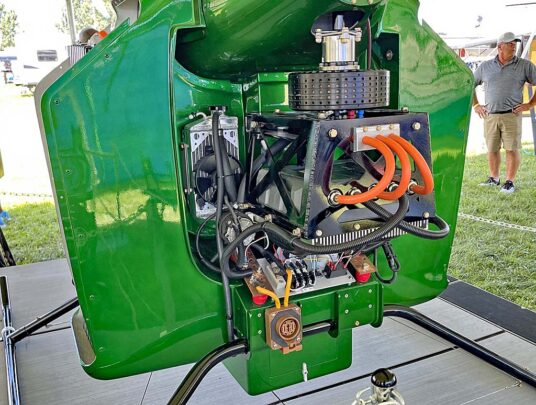 The project is too new to even have a name yet so I'll label it "eXE" for now. The electric XE model has batteries contained in two side compartments (seen hinged up for viewing in nearby photos). Another battery is positioned below the electric power components.
Electric propulsion turns many conventional concepts on their heads. In an ePower system, the motor itself is surprisingly small and compact (nearby image). Obviously more powerful motors will be larger but for a single-place helicopter like the XE series, the motor is flywheel-sized, a stack of old record albums a few inches thick. I marvel at how such a small component can put out such energy.
Electric motors are also good in torque. This suits helicopter operation quite well. Although the energy draw-down on batteries when performing vertical takeoff is rapid, the torque delivers the power that such a takeoff requires.
The project is too new to even have a name yet so I'll label it "eXE" for now. The electric XE model has batteries contained in two side compartments (seen hinged up for viewing in nearby photos). Another battery is positioned below the electric power components.
Electric propulsion turns many conventional concepts on their heads. In an ePower system, the motor itself is surprisingly small and compact (nearby image). Obviously more powerful motors will be larger but for a single-place helicopter like the XE series, the motor is flywheel-sized, a stack of old record albums a few inches thick. I marvel at how such a small component can put out such energy.
Electric motors are also good in torque. This suits helicopter operation quite well. Although the energy draw-down on batteries when performing vertical takeoff is rapid, the torque delivers the power that such a takeoff requires.
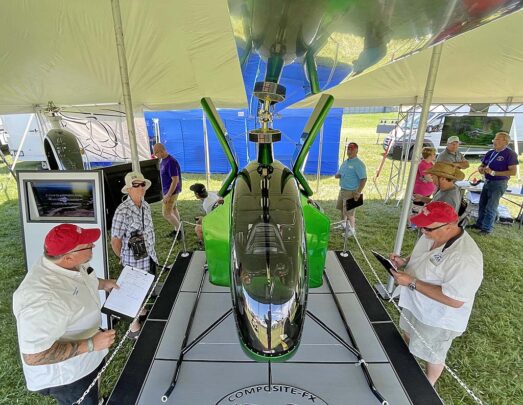
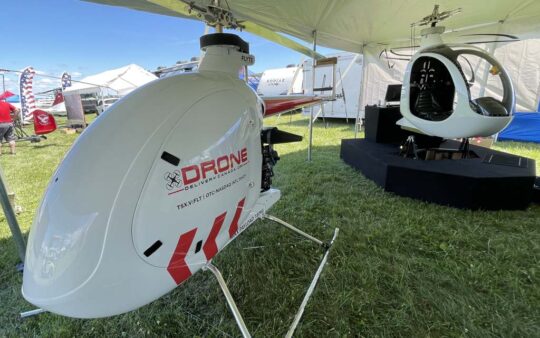
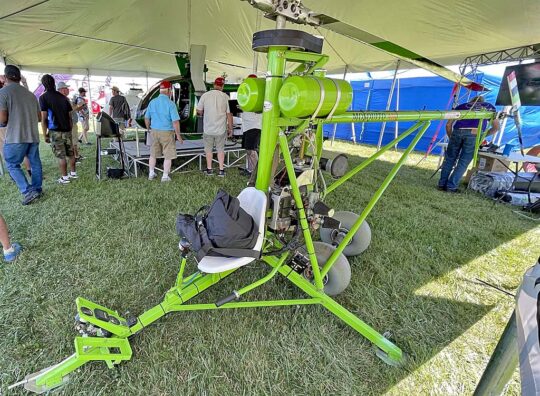
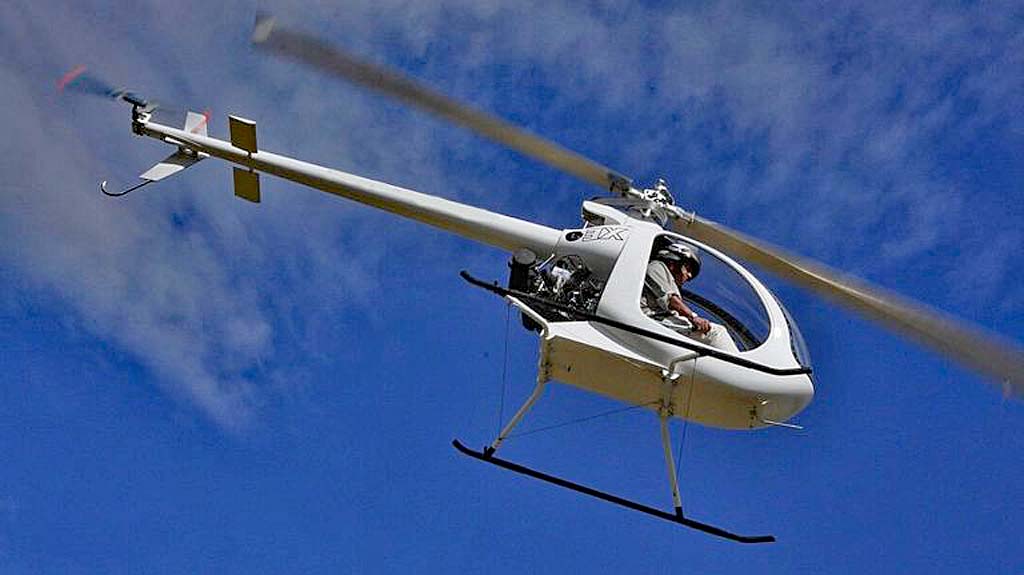
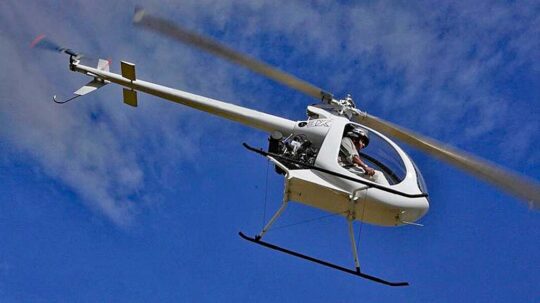 Those words almost don't belong in the same sentence: "afford" and "helicopter." Most pilots have little idea how much they cost because they're seen as expensive and devilishly hard to fly. A Robinson R22, the company's lowest cost two seater, starts at $325,000.
So, are all helicopters expensive and difficult to fly? "No," say Composite FX representatives. As helicopters go, light weight can aid ease of operation. The low mass of Part 103 ultralights can be optimal in some situations but don't take my word for it. With this article I present two fresh videos about this company and their aircraft.
Those words almost don't belong in the same sentence: "afford" and "helicopter." Most pilots have little idea how much they cost because they're seen as expensive and devilishly hard to fly. A Robinson R22, the company's lowest cost two seater, starts at $325,000.
So, are all helicopters expensive and difficult to fly? "No," say Composite FX representatives. As helicopters go, light weight can aid ease of operation. The low mass of Part 103 ultralights can be optimal in some situations but don't take my word for it. With this article I present two fresh videos about this company and their aircraft.
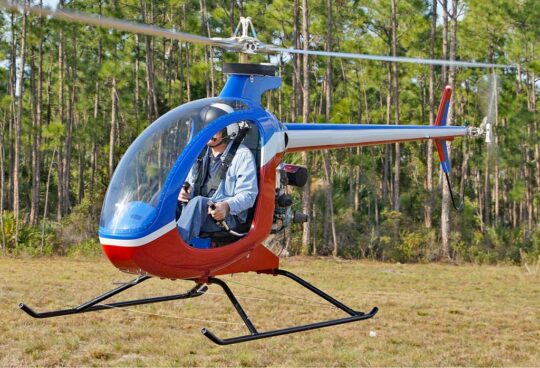 The XE290 is equipped with a more powerful engine, additional fuel, and more instrumentation. Of course, you have to build this one but they can help at the factory.
Their top-of-the-line is the XET, with "T" for "Turbine." The factory guys seem most stoked about this and no wonder. All XEs, regardless of model, run their engines at high revs during most of the flight.
Such engine operation and the need to direct power two ways and at two speeds is why original creator John Uptigrove's transmission simplification was so important.
Usually, helicopters have a costly, heavy, maintenance-intensive transmission to take some engine power and send it to the tail rotor at a higher speed while the rest is used to power the main rotor at a much lower speed. Instead of gears, Uptigrove substituted cog belts for this transmission. The quality of belts has so improved that they are now considered to be highly dependable. Cogs, like gear teeth, insure against slippage.
The XE290 is equipped with a more powerful engine, additional fuel, and more instrumentation. Of course, you have to build this one but they can help at the factory.
Their top-of-the-line is the XET, with "T" for "Turbine." The factory guys seem most stoked about this and no wonder. All XEs, regardless of model, run their engines at high revs during most of the flight.
Such engine operation and the need to direct power two ways and at two speeds is why original creator John Uptigrove's transmission simplification was so important.
Usually, helicopters have a costly, heavy, maintenance-intensive transmission to take some engine power and send it to the tail rotor at a higher speed while the rest is used to power the main rotor at a much lower speed. Instead of gears, Uptigrove substituted cog belts for this transmission. The quality of belts has so improved that they are now considered to be highly dependable. Cogs, like gear teeth, insure against slippage.
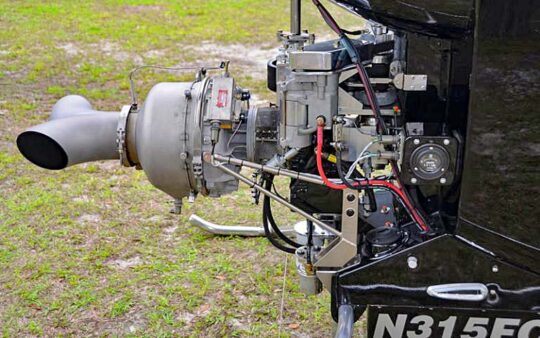 This simpler method is a key reason why not only are the XE helicopters well priced but why they have fewer repair problems and are significantly lighter in weight.
Cog belts must be changed every five years even if they appear to be in excellent condition. To avoid blowouts, semi-truck operators also change tires every five years whether visually needed or not. However, unlike big truck tires, the XE helicopter cog belts are modestly priced around $50, which seems like mighty cheap insurance for such a critical part.
This simpler method is a key reason why not only are the XE helicopters well priced but why they have fewer repair problems and are significantly lighter in weight.
Cog belts must be changed every five years even if they appear to be in excellent condition. To avoid blowouts, semi-truck operators also change tires every five years whether visually needed or not. However, unlike big truck tires, the XE helicopter cog belts are modestly priced around $50, which seems like mighty cheap insurance for such a critical part.
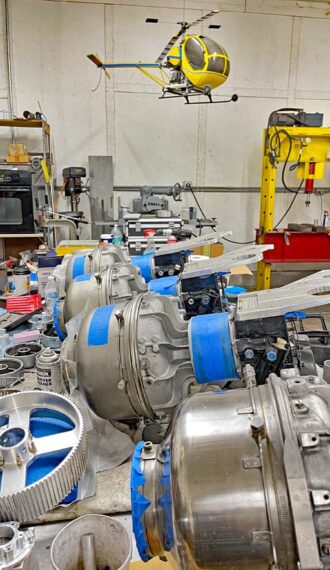
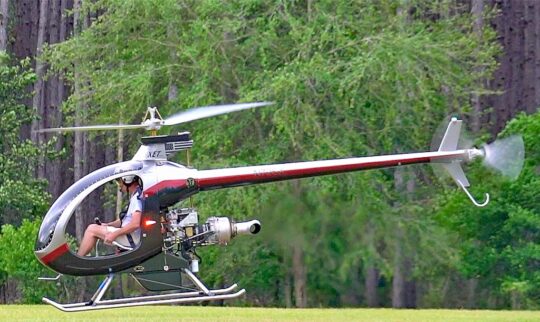 Composite FX personnel showed interest in looking into this opportunity and it is not unreasonable for FAA to at least consider these aircraft assuming appropriate ASTM standards can find acceptance (no helicopter standard has yet been proposed). XE safety does not pose a problem; Composite FX has delivered around 500 units and only two suffered serious accidents, according to the factory.
Composite FX personnel showed interest in looking into this opportunity and it is not unreasonable for FAA to at least consider these aircraft assuming appropriate ASTM standards can find acceptance (no helicopter standard has yet been proposed). XE safety does not pose a problem; Composite FX has delivered around 500 units and only two suffered serious accidents, according to the factory.
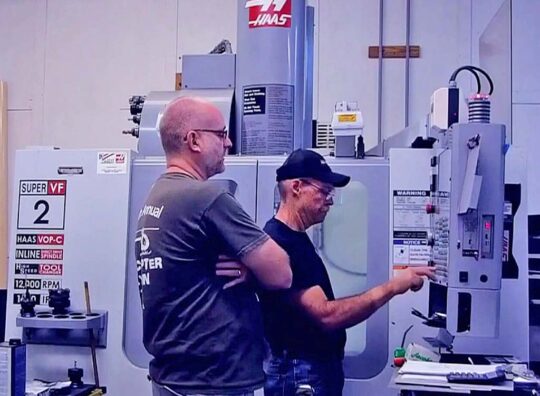
 This first video is shorter (6 min.) and introduces you to the XE line of single place helicopters from Composite FX. You also get a close look at some of the hardware innovations that help Composite FX maintain modest prices. You may not believe the aerial "taxiing" you'll see in this video.
https://youtu.be/FwF311qhf8U
This first video is shorter (6 min.) and introduces you to the XE line of single place helicopters from Composite FX. You also get a close look at some of the hardware innovations that help Composite FX maintain modest prices. You may not believe the aerial "taxiing" you'll see in this video.
https://youtu.be/FwF311qhf8U
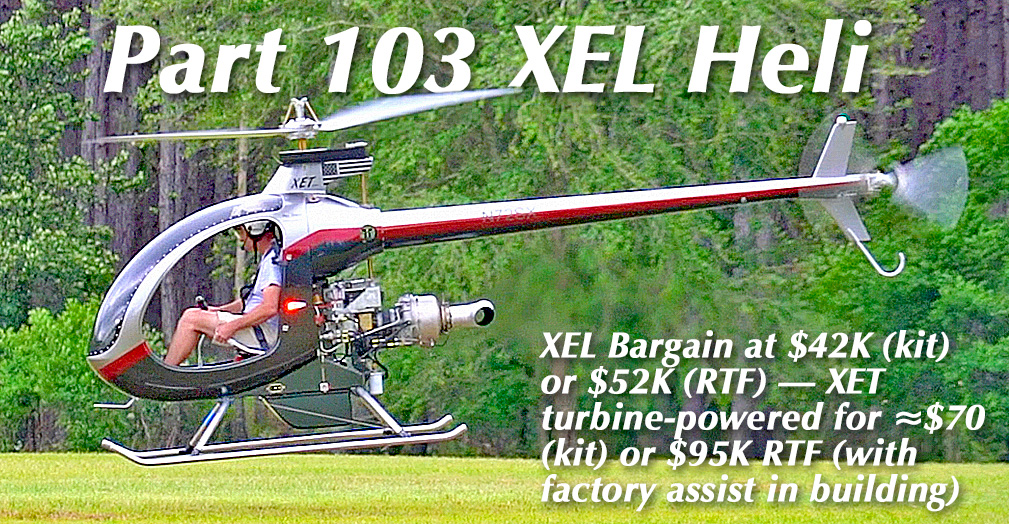
 What appeared in
What appeared in 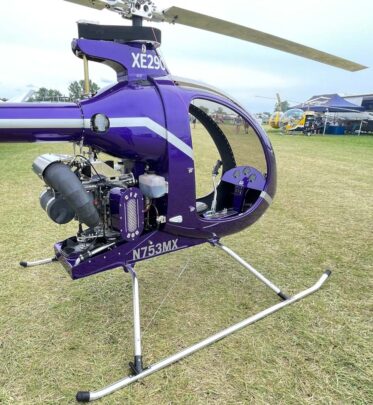
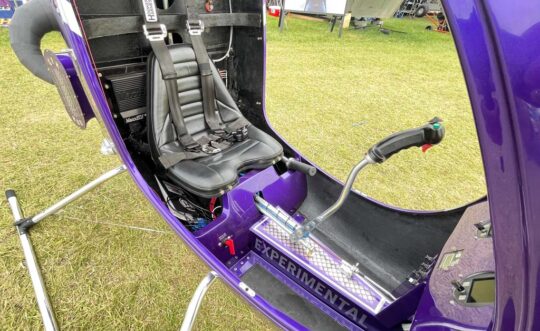 The company also has a virtual reality training system that can help familiarize new pilots. On whole, Norbert felt it was reasonable for a new pilot to fly and he said most pilots will become rather capable in just 10-20 hours.
As their XEL model complies with FAA Part 103 it may be purchased ready-to-fly from the factory in the United States. XEL is supplied with floats, "one of the features that allows it into the ultralight category
The company also has a virtual reality training system that can help familiarize new pilots. On whole, Norbert felt it was reasonable for a new pilot to fly and he said most pilots will become rather capable in just 10-20 hours.
As their XEL model complies with FAA Part 103 it may be purchased ready-to-fly from the factory in the United States. XEL is supplied with floats, "one of the features that allows it into the ultralight category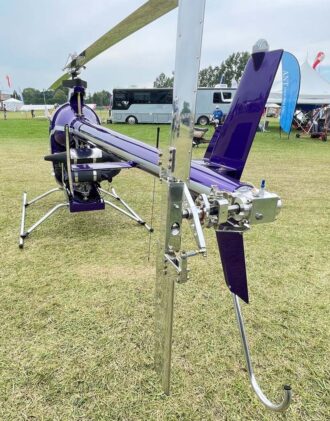 The Mosquito derivative XE-series has been successful with more than 400 kits or fully-built 103 editions built (150 are Part 103 helicopters). The company is less sure about the number of delivered kits to get airborne as many have been sent overseas where it is difficult to track them but they believe more than 300 total units are flying.
Based on a low number of accident/incident reports they appear to enjoy a decent safety record. That may be the best proof of a "docile to fly" designation.
The Mosquito derivative XE-series has been successful with more than 400 kits or fully-built 103 editions built (150 are Part 103 helicopters). The company is less sure about the number of delivered kits to get airborne as many have been sent overseas where it is difficult to track them but they believe more than 300 total units are flying.
Based on a low number of accident/incident reports they appear to enjoy a decent safety record. That may be the best proof of a "docile to fly" designation.
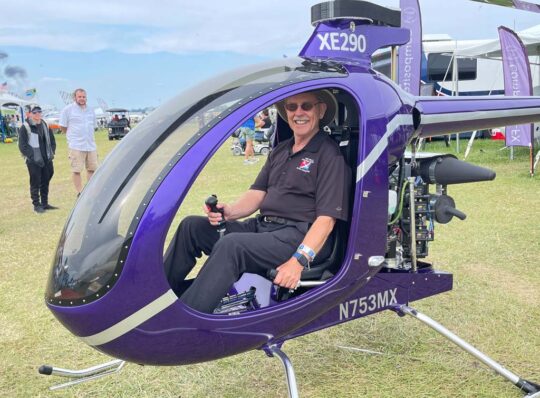 EAB Models
EAB Models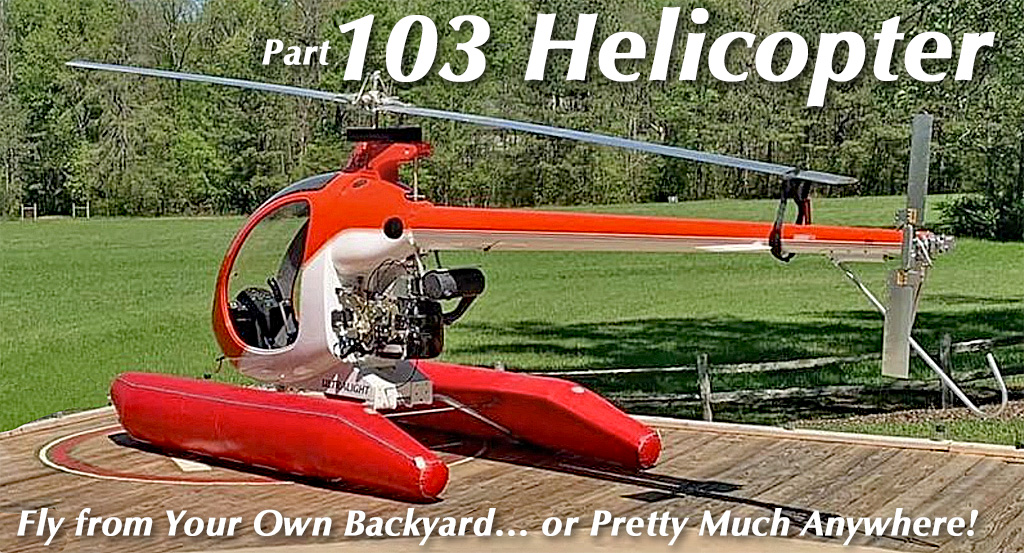
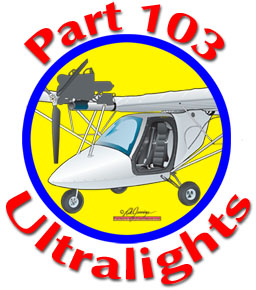
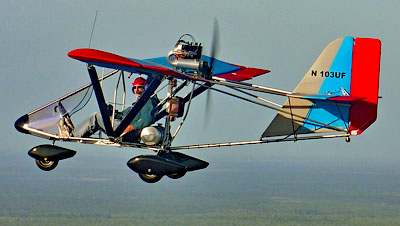 1️⃣
1️⃣ 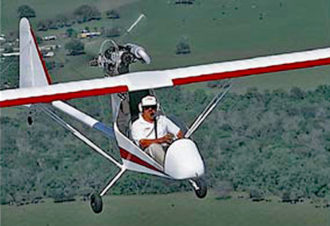 To encourage all producers to tell me their delivery numbers, I will anonymize manufacturer data in reporting results and I will protect the data with my reputation. I will not share information provided in confidence but I will summarize results aiming to report a whole-industry production figure.
I will report how many aircraft in each of the aircraft types noted in the draft list below. I will report how many are designed and built the USA (see flags). If and when I am given permission, I may report on the more successful aircraft and how many the producer has delivered.
This industry data will be quite different from our data on Light-Sport Aircraft, Sport Pilot kit-built aircraft, and modern gyroplanes. You can find out everything about these segments on
To encourage all producers to tell me their delivery numbers, I will anonymize manufacturer data in reporting results and I will protect the data with my reputation. I will not share information provided in confidence but I will summarize results aiming to report a whole-industry production figure.
I will report how many aircraft in each of the aircraft types noted in the draft list below. I will report how many are designed and built the USA (see flags). If and when I am given permission, I may report on the more successful aircraft and how many the producer has delivered.
This industry data will be quite different from our data on Light-Sport Aircraft, Sport Pilot kit-built aircraft, and modern gyroplanes. You can find out everything about these segments on 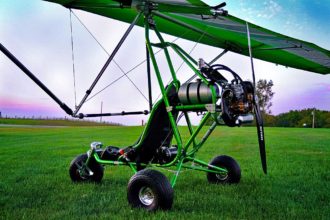 Because Part 103 ultralights are not required to be registered with FAA, I will ask each producer to tell me how many aircraft they delivered in 2019 and 2020. I will exercise my own judgement and do my own due diligence to make this information as accurate as possible. I will use my intimate knowledge of this sector to determine if numbers seem unlikely and then I will investigate further. At least over time, I believe this can provide reliable information but even in the first year, it will be the best information anyone has.
I suspect the Part 103 List will become as popular as our present
Because Part 103 ultralights are not required to be registered with FAA, I will ask each producer to tell me how many aircraft they delivered in 2019 and 2020. I will exercise my own judgement and do my own due diligence to make this information as accurate as possible. I will use my intimate knowledge of this sector to determine if numbers seem unlikely and then I will investigate further. At least over time, I believe this can provide reliable information but even in the first year, it will be the best information anyone has.
I suspect the Part 103 List will become as popular as our present 